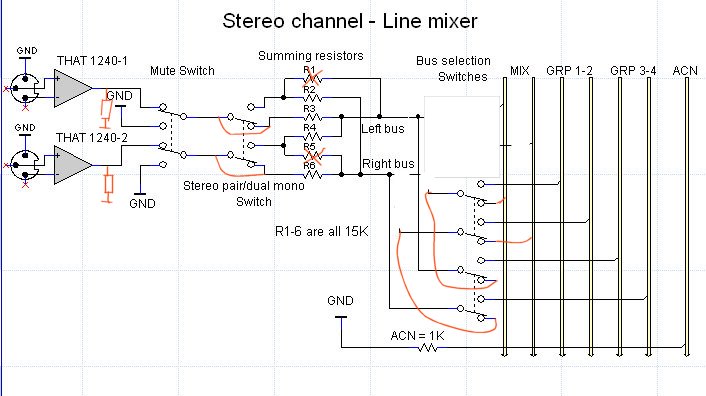radiance
Well-known member
This is something I want to build, nothing special and pretty straightforward. It's basicly a 10 stereo channel summing box with 6 busses. That's 1 stereo mix bus and 2 stereo groups. All inputs have That 1240 line receiver's which are simmilar to the INA134.

Summing will be done with something like this (and that's where I have the resistor values from as well )
)
Any thought's?
I'm struggeling a bit with resistor values since there are a couple of scenario's in terms of channel count. For example, when all stereo pairs are set to "dual mono" there are 20 channels to be summed. When all's set to stereo it's 10 channels.....and then there's the 2 stereo groups which can be assigned to the mix bus as well. So worst case is 24 channels that need to be summed...

Summing will be done with something like this (and that's where I have the resistor values from as well
Any thought's?
I'm struggeling a bit with resistor values since there are a couple of scenario's in terms of channel count. For example, when all stereo pairs are set to "dual mono" there are 20 channels to be summed. When all's set to stereo it's 10 channels.....and then there's the 2 stereo groups which can be assigned to the mix bus as well. So worst case is 24 channels that need to be summed...





